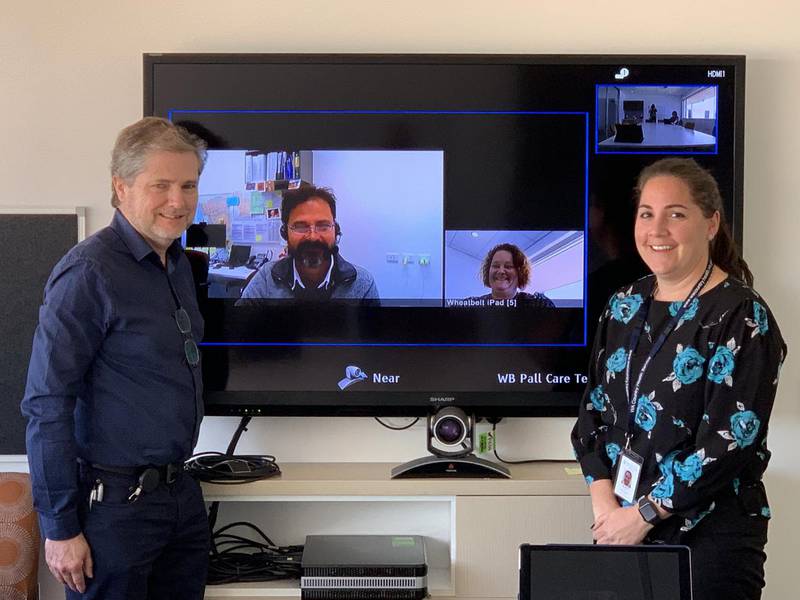Wheatbelt palliative care services via telehealth celebrated this Palliative Care Week
 Wheatbelt Regional Specialist Palliative Care team L-R: David Easton, Brett Hayes, Nicki Antonio and Olivia Moses.
Wheatbelt Regional Specialist Palliative Care team L-R: David Easton, Brett Hayes, Nicki Antonio and Olivia Moses.
This Palliative Care Week (19 – 25 May 2019) the WA Country Health Service reflects on the development of the TelePalliative Care in the Home service which aims to provide care and support via telehealth during the terminal stage of life for patients who wish to die at home.
The Wheatbelt was the first region in Western Australia to launch the TelePalliative Care in the Home service following a two year pilot which began in July 2016.
Nicki Antonio, WA Country Health Service Regional Palliative Care Clinical Nurse in the Wheatbelt said that technology was instrumental in being able to keep patients in their homes for longer and to die at home if that is where they want to be.
“During the TelePalliative Care in the Home trial we found that patients generally had their own portable device, such as a tablet or an iPhone, meaning they could receive support via telehealth wherever they were, such as their bed or couch, and the device could be brought to them,” said Ms Antonio.
“Last year we got iPad Pros to loan to patients to make sure that the service was accessible to everyone across the Wheatbelt, even if they did not have their own device.
“The Wheatbelt Palliative Care team have received lots of positive feedback from carers whose loved ones got their wish to die peacefully in their homes, fully supported by us via telehealth,” Ms Antonio added.
Plans are currently underway to extend the Wheatbelt TelePalliative Care in the Home Service to operate 24/7.
Following the success of the Wheatbelt pilot, a number of other WA Country Health Service Palliative Care Services across WA are continuing to develop the TelePalliative Care in the Home service using innovative ideas to meet the unique needs of their regions.
The WA Country Health Service is pleased to offer telehealth services across regional and remote WA that mitigate the difficulties country patients face in receiving access to regular medical and nursing support due to geographical distances.

